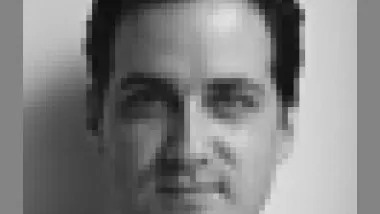Building on the Google thread here started by Chris, this Geo-Tracing site was brought to my attention that links google mapping with individually uploaded content. Its, as I see it, the next iteration of Found City and other geo-tagging sites. Very interesting combination of technology to provide a sense of experience and place in cities that is often hard to capture on screen. As stated from the site: "The main concept is depicted above.
Building on the Google thread here started by Chris, this Geo-Tracing site was brought to my attention that links google mapping with individually uploaded content. Its, as I see it, the next iteration of Found City and other geo-tagging sites. Very interesting combination of technology to provide a sense of experience and place in cities that is often hard to capture on screen. As stated from the site:
"The main concept is depicted above. The MobiTracer is a personalized Java (J2ME) application running on a mobile phone. MobiTracer reads GPS location data from a Bluetooth GPS module and sends it to a server. Within a browser the routes followed by MobiTracers can be viewed. Each MobiTracer can also be followed in real-time moving over the map. In addition the MobiTracer can send track-annotations in the form of media (images/video/audio/text) ratings (e.g. road-conditions) and Points of Interest (POIs) to the server. Media and annotations are shown at their geographic locations on the map. "


The images provide a strong base of what is possible. Once video becomes even more widely used and distributed in these types of applications, Baudelaire's 'flanuer' and the Situationists' 'derive' (for those of you up on your urban theory) will have a new voice and impact on how we experience and plan for cities. As planners we inevitably use public outreach as a key tool in our planning and design process. I'm interested in what happens when local residents and business owners are loaned tools like video cameras to document their perceptions of place which is then posted on-line as a diary. These publicly available annotations could bring a lot of value to planners, moving beyond 2d and, at times, 3d representations to a more dynamic method of seeing neighborhood's from mutliple viewpoints and perspectives.
For a further description of the issues and opportunities associated Google map applications, see Ken Snyder's previous posts on Google and GIS and Geotagging.

Planetizen Federal Action Tracker
A weekly monitor of how Trump’s orders and actions are impacting planners and planning in America.

Chicago’s Ghost Rails
Just beneath the surface of the modern city lie the remnants of its expansive early 20th-century streetcar system.

Amtrak Cutting Jobs, Funding to High-Speed Rail
The agency plans to cut 10 percent of its workforce and has confirmed it will not fund new high-speed rail projects.

Ohio Forces Data Centers to Prepay for Power
Utilities are calling on states to hold data center operators responsible for new energy demands to prevent leaving consumers on the hook for their bills.

MARTA CEO Steps Down Amid Citizenship Concerns
MARTA’s board announced Thursday that its chief, who is from Canada, is resigning due to questions about his immigration status.

Silicon Valley ‘Bike Superhighway’ Awarded $14M State Grant
A Caltrans grant brings the 10-mile Central Bikeway project connecting Santa Clara and East San Jose closer to fruition.
Urban Design for Planners 1: Software Tools
This six-course series explores essential urban design concepts using open source software and equips planners with the tools they need to participate fully in the urban design process.
Planning for Universal Design
Learn the tools for implementing Universal Design in planning regulations.
Caltrans
City of Fort Worth
Mpact (founded as Rail~Volution)
City of Camden Redevelopment Agency
City of Astoria
City of Portland
City of Laramie



























